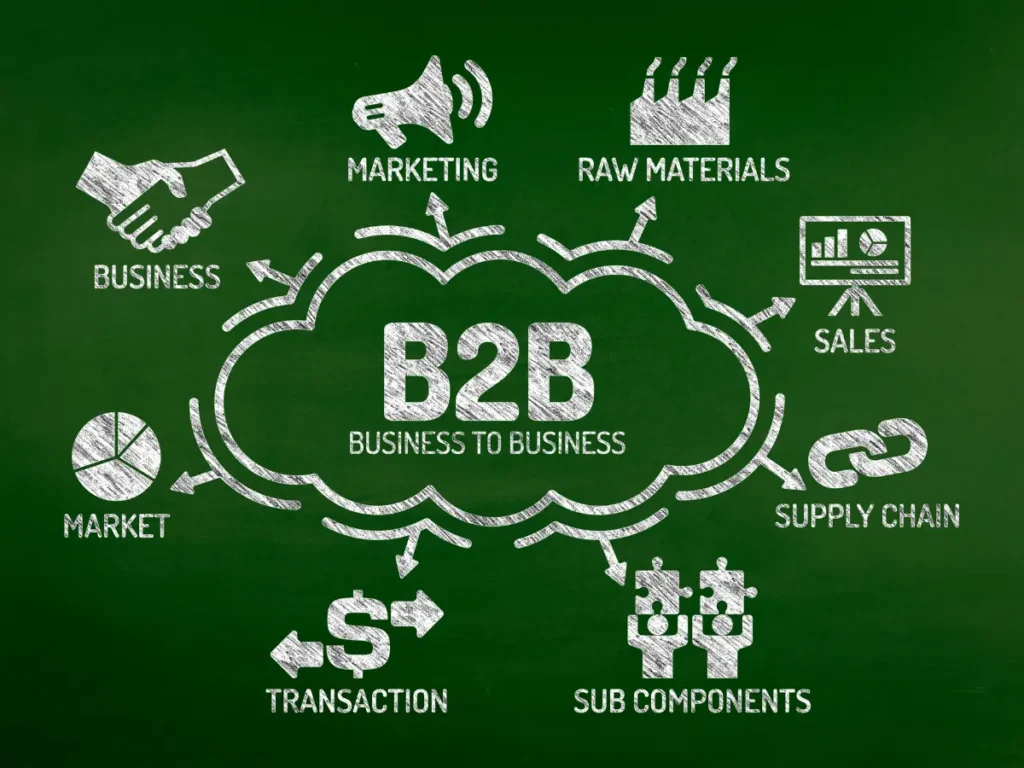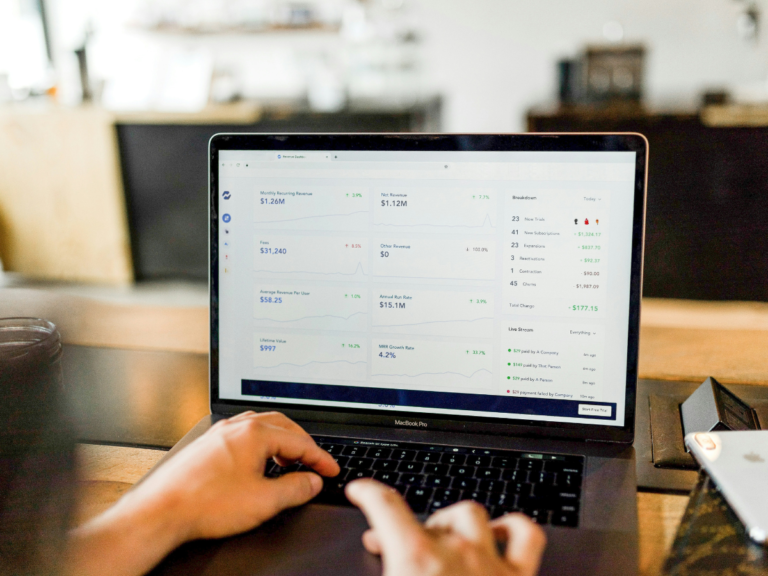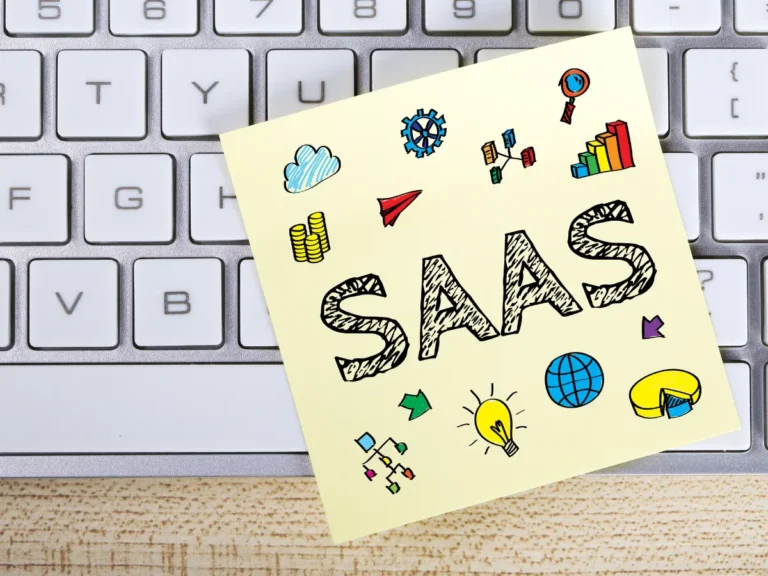
It is quite easy to mistake a B2B SaaS product for traditional software, especially if you have no idea how the product works. This little confusion can have a great impact on the success of SaaS products in the market.
However, the best way to avoid this confusion is by learning about SaaS products. But first, we’ll answer the basic question: What is a B2B SaaS product?
In this article, we will provide you with all the answers you need on SaaS products. From its benefits and disadvantages to its development process. We will also explain how you can market a SaaS product successfully.
What is a B2B SaaS Product?
A B2B SaaS product is a cloud-based software that offers users access to software applications over the internet without having to download the software on their device.
What is B2B SaaS Product: Brief Overview
B2B SaaS products have come a long way since their early invention. In 1999, Salesforce built the first successful SaaS product from scratch: a customer relationship management platform.
This software was designed primarily for start-ups and small businesses, as the subscription-based model was believed to be unsuitable for enterprise businesses.
Not only that, but enterprise-level businesses didn’t use the product due to the slow and unstable internet connection. However, some improvements were made to the software.
Thanks to technology, more B2B SaaS products are available for businesses. Additionally, over 90% of organizations are now adopting cloud-based platforms.
What are the B2B SaaS Product Benefits and Disadvantages?
The benefits of B2B SaaS products can also be used as their key features. So, if you’re looking to build a SaaS product, it’s important you take note of these benefits.
Benefits Of B2B SaaS Product
There are the following benefits of B2B SaaS Products:
1. Easily Accessible
B2B SaaS products are easily accessible. To access the software, you need only a computer or mobile device and stable internet access. This allows you to use the product from anywhere.
2. Highly Resilient
Your data and IT infrastructure are stored in the product’s cloud storage in a remote location. Therefore, if there’s any harm to your business, you can rest assured that your data is safe.
All you need is an internet connection, and you can restore operations from anywhere.
3. Cost Effective
This is one outstanding benefit of SaaS products. Unlike traditional software that requires a high upfront cost to be paid before accessing its services, SaaS products operate on a subscription-based model.
This means that you can decide to pay on a monthly or yearly basis. Additionally, there are other payment options available. However, this depends on how the B2B SaaS product is priced by the service provider.
4. Scalability
As a business owner, you surely have a dream of your business growing more than its current state. However, this growth will come with an increase in workload and require more server space for new users.
Unlike traditional software, which requires you to buy more licenses or server space to accommodate new users, SaaS products allow you to upgrade your existing plan to one that can accommodate all users at once.
Additionally, if your SaaS business sometimes experiences fluctuations in sales or usage, you can easily cut down on subscription expenses.
5. Easy Update
SaaS software takes away the burdensome task of software updates from the users. Updates are usually handled by the service provider.
This makes it easy for you to access new features and security patches without having to do the work.
Disadvantages Of B2B SaaS Product
There are the following disadvantages of B2B SaaS Products:
1. Troublesome Software Integration
When making use of various external software applications, integrating them with your B2B SaaS product might be a hassle. This is because not all SaaS products are compatible with external software.
2. Complex Data Mobility
Transferring your data from a B2B SaaS product you used previously to a new one is never an easy task. It usually requires technical expertise.
3. Low Performance
SaaS products only function properly with a stable internet connection. This means that without a good internet connection, you can’t make use of the product.
3 Types Of SaaS Product
There are various types of SaaS products available on the market. They differ in size and shape and serve various purposes. In this section, we’ll list and explain the three types of SaaS products.
1. Collaborative SaaS
This B2B SaaS product is designed to improve how teams work together. It has features like instant messaging, video conferencing, document collaboration, and so on to enhance teamwork and collaboration.
Notable examples are Zoom, Basecamp, and Google Meet.
2. Packaged SaaS
A packaged SaaS is designed to help companies manage customer relationships, improve marketing effectiveness, and improve employee engagement. An example of this tool is HubSpot.
3. Technical SaaS
This SaaS app provides tools that can be used to manage development or technical processes. An example of this software is CloudSponge.
This product makes it possible for users to refer your service to their contact list without having to leave the site. Basically, the software allows developers to effortlessly include a contact importer in their product.
What are SaaS Product Examples: 6 Examples Of SaaS Product
Let’s look at some examples of SaaS products for small and enterprise-level businesses.
1. Shopify
This e-commerce business platform offers four products. One of its main products is its online stores and retail point of sale. Shopify has an application that allows business owners to launch their online stores easily.
As of last year, over 2 million business owners use Shopify to set up their online marketplace.
This is because the platform offers an all-in-one SaaS solution for inventory management, order fulfillment, payment processing, and real-time business insights.
2. Slack
Slack is a popular SaaS productivity platform that offers instant messaging and video conferencing features to enhance team collaboration.
This SaaS product is used by renowned companies like Netflix and Uber. With a stable internet connection, you can easily download and make use of Slack on your device.
Additionally, Slack can integrate with various third-party apps, including Google Calendar, Google Drive, Zapier, Microsoft Teams, and so on.
3. Dropbox
This is a reliable cloud storage SaaS product that helps improve collaboration and productivity, and also saves time.
With Dropbox, you can store, manage, locate, and share digital files online. These files can easily be accessed online from your tablet, mobile device, or computer.
Additionally, Dropbox can seamlessly integrate with third-party applications.
4. Zoom
This is one of the SaaS products that helped individuals and companies transition to remote settings.
Zoom is a SaaS product that offers video conferencing features for hosting meetings virtually. Thanks to its user-friendly interface, organizations can communicate with workers seamlessly.
5. Google
Google is a renowned tech giant globally. The company has developed over 137 products, some of which are SaaS products.
These include Google Maps, Google Calendar, Google Docs, and so on. Google is used by over 1 billion people globally, making it the most-used search engine globally.
This is because of its fast search result speed, a larger index of web pages, and the specific and useful data it provides for businesses.
6. Square
This is a financial service platform that allows credit card payments using smartphones as POS registers. Square can easily be plugged into a computer or tablet to make it a credit card processor.
Additionally, the company offers products for commerce, banking, payroll, and so on.
What is B2B SaaS Product Development?
This is the process of designing, building, testing, and implementing software applications that can be delivered to users as a service over the internet.

To successfully go through the SaaS development process, there are various steps you’ll have to consider. These steps include:
- Create a B2B SaaS product roadmap
- Conduct market analysis
- Define your product requirements
- Estimate your development cost
- Define your pricing model
- Design an MVP
- Test and iterate your product
1. Create A B2B SaaS Product Development Roadmap
A B2B SaaS product development roadmap is simply a visual representation of your product goals, targets, improvements, visions, and priorities.
It allows you to present your product idea to a stakeholder or investor. Also, a B2B SaaS product roadmap would help your team know your goals and plans for the SaaS product.
It will really be helpful to them during the B2B SaaS product development process, as it can be used to track the progress made.
When designing your B2B Saas product roadmap, you’ll have to answer questions like:
- What are the primary objectives and goals of the B2B SaaS product?
- Who is my target audience or user persona for the product?
- What are the key features and functionalities that need to be developed?
- What is the timeline for each B2B SaaS product development phase
- What resources, including budget, team members, and technology, are required for the project?
- How will the product be marketed and launched to the target audience?
- What metrics will be used to measure the success of the product, and how will they be tracked?
- How will the product be maintained and updated after the initial launch?
By answering these questions, you can be sure that your overall vision and objectives for the B2B SaaS product will be followed.
2. Conduct A Market Analysis
Before starting your B2B SaaS product development, you’ll have to know if your product is needed. You don’t want to develop a product that doesn’t solve the problems of your target audience.
However, you can tackle the problems of your audience by identifying their demands, needs, and preferences. Knowing this will help you determine your area of focus during your B2B SaaS product development process.
3. Define Your SaaS-Based Product Requirements
During your B2B SaaS product development process, you’ll have to prioritize some basic requirements like security, integration options, scalability, privacy protection, and customization.
Due to the increase in cyberattacks, consumers expect that whenever they sign up for a product or service, their private information will be protected. No one would be willing to use a product that doesn’t care about its users’ privacy.
So, when developing your product, you need to consider strict security measures to safeguard your users’ information.
4. Estimate Your Saas Product Development Costs
When building a Saas product, you’ll need to estimate your B2B Saas product development cost. Doing this will give you an idea of how much you’ll be spending on the design, coding, analysis, and marketing of the product.
Additionally, it’s important that you set aside emergency funds for unforeseen circumstances and challenges.
5. Choose Your Technology Stack
For this step, you’ll have to decide how you want your B2B SaaS product developed. You’ll need to choose a SaaS product development framework for both backend and frontend development.
For the front end, you can choose frameworks like React, Vue.js, Angular, and HTML, while frameworks like Node.js and Django can be used for the back end.
However, if you aren’t a website or software developer, you likely won’t have an idea of which framework is best.
So, to save you from endless brainstorming, you can consult professionals who can help you.
6. Define Your Pricing Model
When pricing your B2B SaaS product, consider your users’ financial condition, needs, and habits. This will make it easier for you to gain more customers and grow your business.
While choosing a pricing strategy for your B2B SaaS product, ensure you choose the right short-term model that can help you settle in the market.
However, it is also important that you have a long-term pricing model in mind. This model should depend on your customers, B2B SaaS product lifestyle, and long-term goals.
In addition to your pricing model, you must have a social media marketing strategy and an SEO strategy in place.
7. Design An MVP
MVP simply means minimum viable product. It is usually created by developers or businesses to meet the needs of their audience with reduced development costs.
A minimum viable product contains core features that can meet the audience’s needs. As a business owner, having a minimum viable product is the fastest way to check if your product meets the needs of your audience and also makes an entry into the market.
Before designing an MVP, you’ll need to consider the following:
- Your target audience
- Ways they can solve their problems through your software
- Solutions to their problems
Considering the above-listed factors will give you an idea of the core features you need to add to your MVP.
8. Test And Iterate Your Product
This is the stage where the MVP is tested by early adopters in order to ensure that it meets the needs and desires of the target audience.
Taking an iterative approach will help the B2B SaaS product development team make corrections to the course early.
The team can test the product to confirm its viability before an extensive budget is committed to the course.
Additionally, you can gather feedback from users to help make the next iteration of the SaaS product better.
What is SaaS Product Management?
SaaS product management simply involves creating and launching products that solve users’ pain points. A B2B SaaS product manager usually handles this process.
How To Effectively Manage A B2B SaaS Product
Below are the steps you can follow to manage your B2B SaaS product.
- Find out your user’s pain point: A product revolves around its users. For a product to be considered valuable, it has to solve the problems of its users. To identify your users’ pain points, you can conduct a survey, interview, or market research
- Prioritize Product Features: Once you’ve found out your users’ pain points, you’ll need to find out features that can solve their problems. You can collaborate with your product management team to come up with features that you can add to your product.
- Develop A Roadmap: This will show your vision, priorities, direction, and progress over time. With this roadmap, your development team can have an idea of the timeline for each process to be completed.
- Design A Wireframe or Prototype: By building a Wireframe, you’re providing your team with an idea of what you want your product to be like. On the other hand, your product prototype can be shared with stakeholders and some selected groups of people. Doing this is a great way to have an idea of what people think about your product.
- Launch Your Product: This is where you get people to see what you’ve been up to. At this stage, it’s still important that you monitor your product to get reasonable feedback that you can implement.
SaaS Product Pricing Model
When you’re launching a SaaS product, one important thing to do is determine your pricing plan. Doing this will increase your company’s revenue and also impact users’ choice to use your product.
Some common pricing models are:
1. Flat-rate
In this model, companies offer users a standard feature for a fixed rate.
2. Freemium
This model offers users access to specific features for free alongside a paid plan. Users can make use of this model to check out a product’s features before committing to pay for a different plan.
3. Tiered Pricing
This is the most common model among SaaS companies. It involves offering users multiple packages, with each containing features that align with their specific needs.
4. Per-user Pricing
SaaS companies use this model to offer features based on the number of users. For this model, the prices vary. For example, if you’re adding 1-5 users, you might be required to pay $15, but if you’re adding 5-10 users, you might be required to pay $30.
5. Usage-based Pricing
This model is used by SaaS companies to charge users based on how often they use the product. This method of pricing is suitable for small businesses.
What's Next?
Now that you have an idea of what a B2B SaaS product is, it’s time to decide what you’d do with the information. If you’re a business owner or you’re thinking of a profitable business to venture into, having a SaaS development business isn’t a bad idea.
Moreover, the SaaS industry is still growing, and it’s even expected to reach a market value of 1,228.87 billion in 2032. So, you’re definitely in luck if you decide to go through the business path.
Furthermore, designing a B2B SaaS product isn’t easy, especially with tough competitors available on the market. But it’s necessary that you find out what users’ pain points are and come up with an idea that will help you stand out.
If you’re ready to bring your SaaS idea to life or need help figuring out where to start, book a free discovery call with us today. Let’s explore how we can turn your vision into a profitable, scalable product.
Related Marketing Strategies

Comparing Top Antidetect Browsers: AdsPower vs GoLogin vs MultiLogin

How to Track and Measure Growth with Startup Analytics Tools



